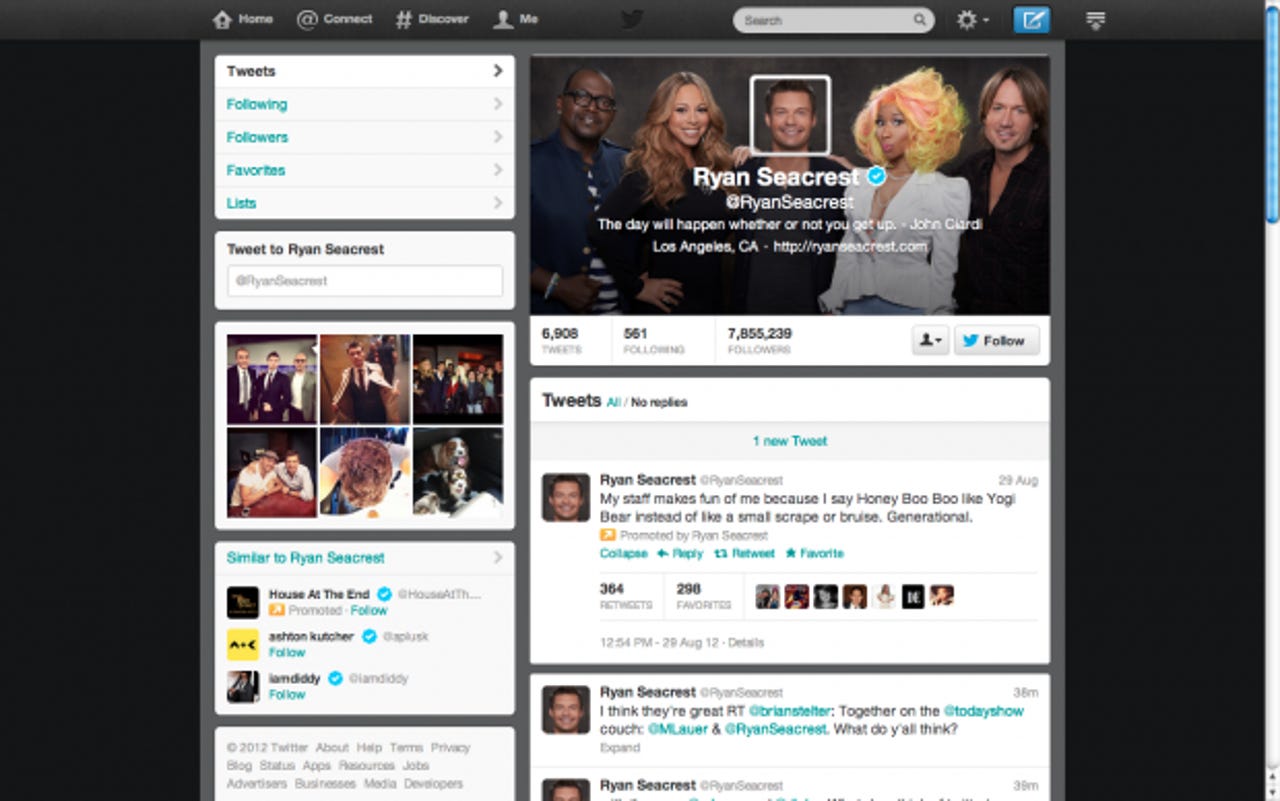With headers, Twitter gives business customers a facelift


Advertisers are an amusingly needy bunch. They want your attention, and ride on the back of attention-grabbing venues to steal it away. Take publishing, for example: you come to ZDNet presumably to read what we write about the technology industry. Advertisers try to steal your attention away from that by pitching you products. At best, it's relevant and seamless -- a tech product at a good price when you need it. At worst, it's distracting -- a hurdle on your way to what you wanted in the first place. Desperation: it's a funny business, isn't it?
It's also a highly lucrative one -- there's a reason that the cable television show Mad Men takes place in midtown New York, on the well-heeled Madison Avenue, and not downtown, on the tenement-bound Madison Street that runs beneath the Manhattan Bridge. Your attention (and bank account balance) is finite and in high demand, and that's why businesses of all sizes and stripes seek to capitalize on it. Without attention, there can be no sale.
Twitter has not been shy about revealing its ambitions to take a piece of that pie. Co-founder Jack Dorsey has indicated in the past that advertising is key to the social service's future. Twitter has proved to be a highly engaging real-time platform for a small, passionate, influential community; businesses naturally want to be there. In many ways, Twitter is an intravenous drip into the arms of businesses' best (and worst) customers. Incidentally, the same goes for social rival Facebook, though the means to that end are completely different: Facebook has grown into a living, breathing directory of people and pertinent information about them; Twitter has grown into a news-breaking, customer service-managing hybrid.
The word "engagement" gets thrown around a lot these days; it's really a buzzword that indicates the relationship between ad effectiveness and your attention. Maximizing that metric is the slippery secret of the entire industry. For most advertisers, it starts with a simple, more visceral expectation: presence.
That's precisely what's behind Twitter's announcement this morning of "headers," a way for Twitter users to further customize -- within a strict layout, of course -- their pages. While the visual benefits to the average user are nice -- look, pretty artwork! -- the real upside of these is for businesses. In exchange for their dollars, businesses seek special attention. They want everything they touch to look, feel and sound like an extension of their message. (In the Ryan Seacrest example pictured above, the message is, "If famous people are present, I'm not far behind.") Today's Twitter changes relegate more screen space to the account owner, with the hope that customers -- ahem, regular users -- will be more willing to follow brands like they would a real person. (And yes, Mr. Seacrest is a brand.)
If you're familiar with Facebook's recent changes to its profile pages, you'll notice the same motivational factors apply here, though that company came to this conclusion first. For both companies, the upgrade intends to improve the first impression of a potential customer. The more attractive the page, the more chance of a "follow" or "like," propping open the door to future interaction between customer and brand.
Keep in mind that this change won't fundamentally impact each social service's business model -- the burden remains on both companies to stoke engagement through continued interaction, which happens through a feed and not these profile pages. The headers (and new photo galleries, et cetera) intend to merely give each business' digital shop more curb appeal, to lure more customers inside. They won't change whether passersby wander down that digital street in the first place.
What's that mean for Twitter, and by extension, Facebook? For starters, it's that they're on an eventual collision course in terms of product. As I mentioned above, the services are quite different in their approach and their appeal, and they may never truly overlap: for example, Facebook has the elderly market cornered (photos of grandkids plus the second-coming of chain mail? where do I sign up?!), where Twitter has the news-minding digerati crowd on tap (did you see what Lady Gaga tweeted this morning?!). Despite their differences, both companies are influencing each other in their attempt to find a sustainable way to use their massive, attention-grabbing digital networks to make money from users.
Ironically, all they need to figure out is how to get their attention.
Fun fact: In 1999, Ryan Seacrest worked as an on-air host for our consumer tech sibling CNET. Won't you come back to us, Ryan?
Oh, and make sure to follow ZDNet on Twitter. We may not have Seacrest's winning smile, but we guarantee we won't tweet about Kim Kardashian.